Amazon Fire TV Cube vs. Fire TV Stick vs. Fire TV Stick 4K vs 4K Max: What should you buy?
The Amazon Fire TVs differ primarily in whether they offer 4K resolution, and how much they lean into the Alexa ecosystem.

It can be pretty tough deciding which Fire TV device to get. There's a lot to unpack in this bout that sees several of the best streaming devices up against one in another with the Amazon Fire TV Cube vs. the Amazon Fire TV Stick vs. the Amazon Fire TV Stick 4K vs. the Amazon Fire TV Stick 4K Max — and let's not forget the Amazon Fire TV Stick Lite.
Here at Tom's Guide, we know a thing or two about which will serve you the best, making your search far less of a hassle. We've tested and reviewed all five of these varied Fire TV devices (including the most recent Fire TV 4K Stick and 4K Stick Max), so we're certainly the people that can tell you what's what.
Thankfully, some key differences make it easy to narrow these devices down to more specific needs. Are you in the market for a basic 1080p Full HD streaming stick with access to all the best streaming services? The Amazon Fire TV Stick and the Fire TV Stick Lite are both affordable and give you just what you need. You can even learn more from our handy Fire TV Stick vs Fire TV Stick Lite comparison for all the major differences between these devices.
But if you're looking for something a bit more powerful, you may want to check out the Amazon Fire TV Stick 4K, Amazon Fire TV Stick 4K Max or Amazon Fire TV Cube (2022). These will all allow you to stream in 4K, but aren't all built equally. Only the 4K Max and Cube have the speed you need to ensure the ultimate streaming experience, whereas the 4K Max is on our shortlist for the best Alexa compatible devices. The Cube does offer some extra bells and whistles, but it's often tough to justify its higher price tag.
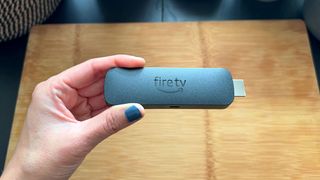
While the Fire TV devices are great, especially for Amazon Prime power users, Roku and Google TV also offer a lot of the same features and apps. So make sure to check out our Roku vs. Amazon Fire TV Stick face-off and our Chromecast vs Fire Stick face-off to see how these platforms compare.
But if you're settled on getting a Fire TV device, we've got you covered. Here's how the Amazon Fire Cube vs. Fire Stick (in all of its configurations) shakes out:
Fire Cube vs. Fire Stick: Size and design
Why you can trust Tom's Guide
One of the biggest differences among the devices is how they look (at least between the Sticks and Cube). The Fire TV Stick is the smallest of the bunch: a small black rectangle measuring 3.3 x 1.0 inches — and the Fire TV Stick Lite is just a little larger, at 3.4 x 1.2 inches.
The Fire TV Stick 4K and 4K Max have the same general design, but a bit bigger, at 4.25 x 1.18 x 0.55 inches. To master Amazon's cheapest Fire TV streamer, check out our guide for how to use the Fire Stick.
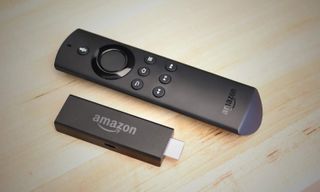
As the name suggests, the Fire TV Cube features a different appearance entirely: a 3.4 x 3.4 x 3.0-inch box that isn't quite a cube. Some require constant connection to a wall outlet; the Fire TV Max, though, can be powered through one of your TV's USB ports.
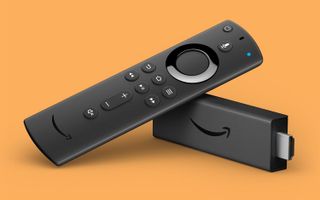
While all five products are relatively small, it's worth considering how much space you have around your TV. If you have lots of room, a Fire TV Cube will fit just fine; if not, one of the dongles will have to suffice.

Finally, only the Fire TV Cube supports Ethernet connections out of the box. While previous models required you to use an adapter, the 2022 Fire TV Cube puts that port right on the back.
You can buy an Ethernet adapter for either the Fire TV Stick or the Fire TV Stick 4K, but it's a bit of a daisy chain. Just keep that in mind if your Wi-Fi isn't strong enough for 4K streaming (about 25 Mbps down).
Fire Cube vs. Fire Stick: 4K and HDR
Simply put: The Fire TV Cube, Fire TV Stick 4K and 4K Max support 4K resolutions and HDR protocols. The Fire TV Stick does not. If you have a TV that maxes out at 1080p, the standard Fire TV Stick is fine; otherwise, you'll definitely want one of the other two devices.
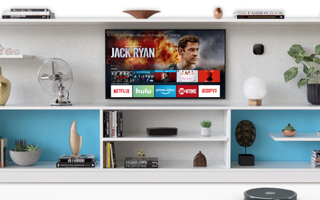
Both the Fire TV Stick 4K, 4K Max and the Fire TV Cube support 4K resolution and the HDR 10 and Dolby Vision protocols, which provide a much richer color gamut. Previously, this functionality was available only in the Fire TV Stick 4K, but a newer version of the Fire TV Cube has corrected the oversight.
The new Fire TV Cube 3rd Gen, however, adds Super Resolution upscaling, sharpening HD content to 4K. We're curious how will this works.
Fire Cube vs. Fire Stick: Alexa integration
Like just about every Amazon gadget on the market lately, all three Fire TV Sticks feature full Alexa integration. This means that you can check the weather, manage your shopping list, look up sports scores, research traffic conditions and create impromptu playlists using only your voice. All five Fire TV models come with voice remotes, so you can start using Alexa as soon as the setup is complete.
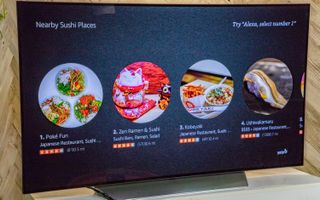
However, the Fire TV Cube handles these features just a little bit better than its dongle counterparts. That's because in addition to being a streaming device, the Fire TV Cube is also a full-fledged Alexa speaker. That means that you can speak to it and give it commands without having to hold down a button on the remote.
Furthermore — and this is a bigger deal for people with smart-home gadgetry — that means that the Fire TV Cube can also control your lights, thermostats and other IoT devices right out of the box. The Fire TV Stick and Fire TV Stick 4K can also do this, but you have to first connect them with an Amazon Echo speaker.
Briefly, then: If you want an Alexa-enabled speaker and a streaming device, but have neither, the Fire TV Cube is your simplest solution. If you already have an Echo speaker, or don't want one, one of the Fire TV Stick variants will be fine.
Fire Cube vs. Fire Stick: Remote controls
If you want a fancy remote control, you're going to have to pay extra for it. The standard Amazon Fire TV Stick comes with a voice remote, but that's about the most innovative thing about it. (Old-timers may remember that when it first came out, the Fire TV Stick didn't have a microphone at all.) Otherwise, all it's got is the standard array of d-pad, confirm, play/pause, rewind, fast-forward, home, back and options buttons.
The Fire TV Stick Max, though, has an extra button on its remote: Live TV. This button jumps you straight to that section of the Fire TV OS, which integrates with Sling TV and other services.
Amazon now offers an even better remote, so check out our Alexa Voice Remote Pro review for the full scoop.
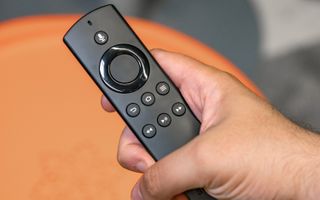
The Fire TV Stick Lite remote drops the TV controls for power and volume, so you might not want that device if you're trying to cut down on clutter.
Both the Fire TV Stick 4K and the Fire TV Cube come with Amazon's upgraded Alexa remote. (Don't let the name confuse you; you can still use Alexa features with the regular voice remote.) This remote features four important buttons missing from the basic voice remote: power, volume up, volume down and mute. The Alexa remote syncs automatically with your TV, and you can use it to control the whole TV set — not just the Fire TV player.
While you could buy the Alexa remote for $30 on its own, considering that the Fire TV Stick costs $40 and the Fire TV Stick 4K $50, it's a much smarter idea to just buy the 4K stick if the remote is a big deal to you. In my own tests, I found it pretty useful.
Fire Cube vs. Fire Stick: Price and value
As stated above, the Amazon Fire TV Stick Lite is the cheapest of the bunch at $30, followed by the $40 Fire TV Stick, the Fire TV Stick 4K at $50 and the Fire TV Cube at $139. And at $55, the Fire TV Stick 4K Max is asking for a little more than the 4K.
To put it bluntly, there is almost no reason why anyone should invest in the Fire TV Stick, when the 4K variant is only $10 more and comes with a much better remote control. Not only will you be future-proofing your purchase, but you'll also have a better peripheral right off the bat. And if performance and app open times matter to you, get the Fire TV Stick 4K Max.
The Fire TV Cube, on the other hand, is a bit expensive. This makes sense, though, as it's not just a Fire TV device — it's also a full-fledged Alexa speaker. If you don't have a smart speaker in your den, or want your very own digital assistant built into a versatile streaming box, the Fire TV Cube makes sense.
In the battle of Fire Stick 4K vs. Fire Stick vs. Fire TV Cube, the $50 Amazon Fire TV Stick 4K represents the sensible midpoint that should work best for most viewers. It has the best balance of price and functionality.
Sign up to get the BEST of Tom's Guide direct to your inbox.
Get instant access to breaking news, the hottest reviews, great deals and helpful tips.

Henry is a managing editor at Tom’s Guide covering streaming media, laptops and all things Apple, reviewing devices and services for the past seven years. Prior to joining Tom's Guide, he reviewed software and hardware for TechRadar Pro, and interviewed artists for Patek Philippe International Magazine. He's also covered the wild world of professional wrestling for Cageside Seats, interviewing athletes and other industry veterans.